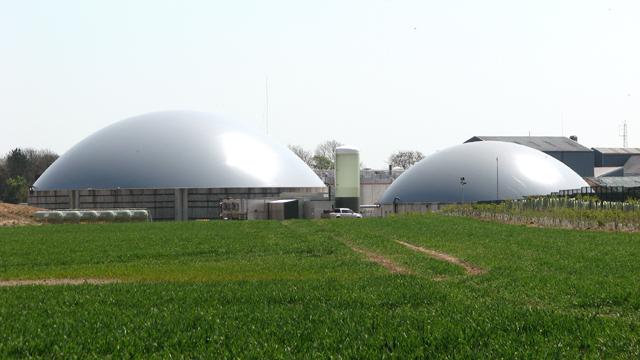
Blog post
Are biofuels the next big opportunity?
Did Mel Gibson foresee the renewable future?
Those of us of a certain age will recall the series of Mad Max films of the 1980s, a series of post-apocalyptic films in which a depressingly young-looking Mel Gibson roars around the Australian outback in a series of improbable vehicles whilst battling various villains for survival. Two interesting facts about these films have stuck with me ever since, the original film was made for $300,000 and took over $100m at the box office which for a long time made it the most profitable film ever made; and secondly the plot of the second film, Beyond the Thunderdome, is centred on a renewable energy plant based on pig manure. Roll forward thirty years and three things have happened; Mel Gibson now looks like an Aussie Santa Claus with anger management issues, the most profitable film ever made is now something called Paranormal Activity (which I’ve never seen), and the UK Government has finally caught on to the potential of making renewable fuel for trucks and planes from organic waste products.
Why liquid fuel will remain important – the immutable physics of specific energy
As we have discussed in a previous blog, heavy goods vehicles and aviation are huge contributors to global carbon emissions. There are only 500,000 trucks trundling around UK roads compared to 30 million cars but the trucks contribute 16% of all of our road transport emissions. Global aviation pumps another astonishing 900 million tonnes of CO2 into the atmosphere per annum so tackling the emissions of these two types of transport will be a key step on the road to a low carbon future. However, the immutable physics of specific energy (or joules of energy per kg of weight) mean that conventional batteries are probably never going to work as a means of storing enough energy to power either trucks or planes for any considerable distance. This mean that liquid based organic fuels (which have a much higher specific energy per kg) are going to have to play a significant part in a low carbon future and this is why the Government are keen on developing more sustainable sources.
Now the obvious contention at this point is that the truck or plane running on a blend of conventional and bio fuel is still emitting CO2 so that’s still bad surely? Yes it is but the CO2 in the bio fuel component was absorbed from the atmosphere as part of the process of creating the hydrocarbons used in this component so the net result is neutral. Clearly in a perfect world, the truck would not emit any CO2 at all but as we have discussed, a purely electric truck and plane fleet is a long way from being technically viable so we have to live in the imperfect world with the rules of physics as they are.

The Road Transport Fuel Obligation – a quick summary
This is where the clunkily titled Road Transport Fuel Obligation (RTFO) policy kicks in. In essence this policy obliges all UK suppliers of transport fuel to blend a percentage of the fuel they supply from renewable and sustainable sources. The current % is 4.75% from renewable fuel but this will ramp up to 9.75% in 2020. To put this number into some sort of meaningful context, the UK road fleet consumes about 46 billion litres of fuel per year so nearly 10% of that is a very big number indeed.
At the moment RTFO obligation is mainly being met through importing bio ethanol but the Government thinks that dedicating huge amounts of land in other countries to satisfy our renewables policy objectives is probably not the best idea they have ever had – so they are capping the amount of bio ethanol that can be used in the blend. The balance will have to come from fuels derived from waste or agricultural by products. More on this later.
The role of RFTO certificates
Although the aim of the policy is to produce blended fuel, it has been acknowledged that a straight % based policy won’t work if the supply of alternative fuel does not actually exist. To address this, the Government have developed a clever certificate based scheme to incentivise investment in the supply chain. This scheme is a little bit complicated so bear with me on this but in simple terms it works as follows; fuel producers who do not actually blend 100% of their fuel with renewable based substitutes can buy the equivalent amount in certificates from renewable fuel suppliers. These certificates are traded on an open market and the current price is about 28p per litre. The suppliers who make the fuel can sell their output to one fuel producer and their certificate to another hence receiving two sources of income for the same litre of fuel. A similar mechanism to the Renewable Obligation Certificate (ROC) for those familiar with it. The subtle but clever angle is that different types of renewable fuel attract different numbers of certificates so biomethane produced from crop feedstock is rewarded 1.9 certificates per litre whereas the equivalent fuel produced from waste receives 3.8 certificates. This smart system is designed to incentivise the production of the cleanest and most land efficient fuels. To shoehorn in another 80s heartthrob reference, in the words of Kevin Costner, the Government is assuming ‘if you build it, they will come’. The long term validity of that assertion is still unclear but what we do know for certain is that the inverse is certainly true: if we don’t invest in bio fuel supply chains, the supply won’t exist.
Turning organic waste into fuel – the basic physics
As we saw in Mad Max, the processes for creating liquid or gas-based fuel from organic materials are well established and proven. I’m not a chemist but my very much man-in-the-street understanding is that you take what is basically a long chain hydrocarbon (which is a big molecule made up of lots of carbon and hydrogen atoms) and use energy to break it down into lots of smaller hydrocarbon molecules which can then be burnt as fuel in engines. A bit like when you cut up your fussy little kid’s dinner into smaller chunks to make it more palatable for them. Once you realise that this process is applied easily, a whole range of waste organic materials suddenly look like little oil wells in disguise and we are seeing projects with fuels such as waste wood, cooking oil and straw all attracting investment in a rapidly growing market.
Big oil entering the frame
This potential has attracted the interest of the major oil companies who realise that the technical challenges of the process are maybe not that daunting compared to extracting oil from under the bottom of the sea. Shell have recently announced a tie up with British Airways and Veloycs to build a plant in Humberside that will produce hundreds of thousands of tonnes of aviation fuel from household waste and similarly KLM are developing a plant in Rotterdam that will turn used cooking oil into jet fuel.

The potential for agricultural projects
This nascent industry has also attracted the interest of canny farmers. A little known but very significant aspect of the legislation is that straw counts as a waste product and fuel produced from it attracts 3.8 RTFCs. Straw is a by-product of crop production and has very limited alternative use. It is mainly used as animal bedding or to thatch pretty little cottages in the leafy idylls of rural England. Wet straw in particular has a very low value of less than £10 per tonne but critically it can be converted into a blend of CO2 and methane through a form of anaerobic digestion. One ton of wet straw can be converted into about 400 m3 of blended gas which can then be split into its component gases through low temperature liquification. The methane component attracts 3.8 RTFCs as well as the wholesale price and the CO2 can also be sold to the food industry. This suddenly makes turning low value wet straw into valuable gas a very interesting proposition and a number of farmers are now exploring the economic viability of building plants.

Are bio fuels the next big investment opportunity?
This market is also attracting the interest of yield hungry investors. With the long-term decline in yields on wind and solar projects, the idea of making 10% plus IRRs from European based biofuel projects is very compelling. Biofuel is probably the next big opportunity in global renewables and investors are keen to get in on the ground floor.
Although a little less polished than your typical investment committee paper, the concept of organic based fuels that Mad Max floated some thirty years past has finally cottoned on, and the idea of turning organic waste materials into fuel for trucks and planes is now becoming a Government-backed reality. The policy to make this happen is a classic carrot and stick approach, a market for selling RTFO certificates (the juicy carrot for the developers) and a statutory obligation to blend fuels (the big stick for the suppliers). The big oil companies have realised that the stick bit is not going to go away and so rather than keep writing cheques for the carrots, they are increasingly building their own projects or investing alongside developers. Similarly investors are looking hungrily at the space so even in these strange and surreal times, there is still appetite for good projects that produce renewable liquid fuels. Is this the beginning of the end for oil? No, but it might just be the end of the bit in the middle.

